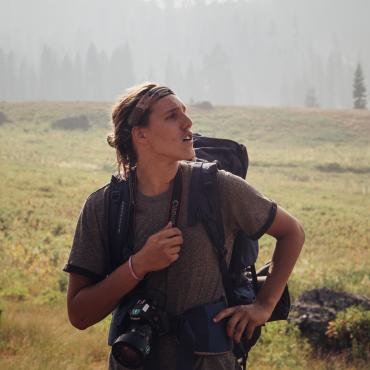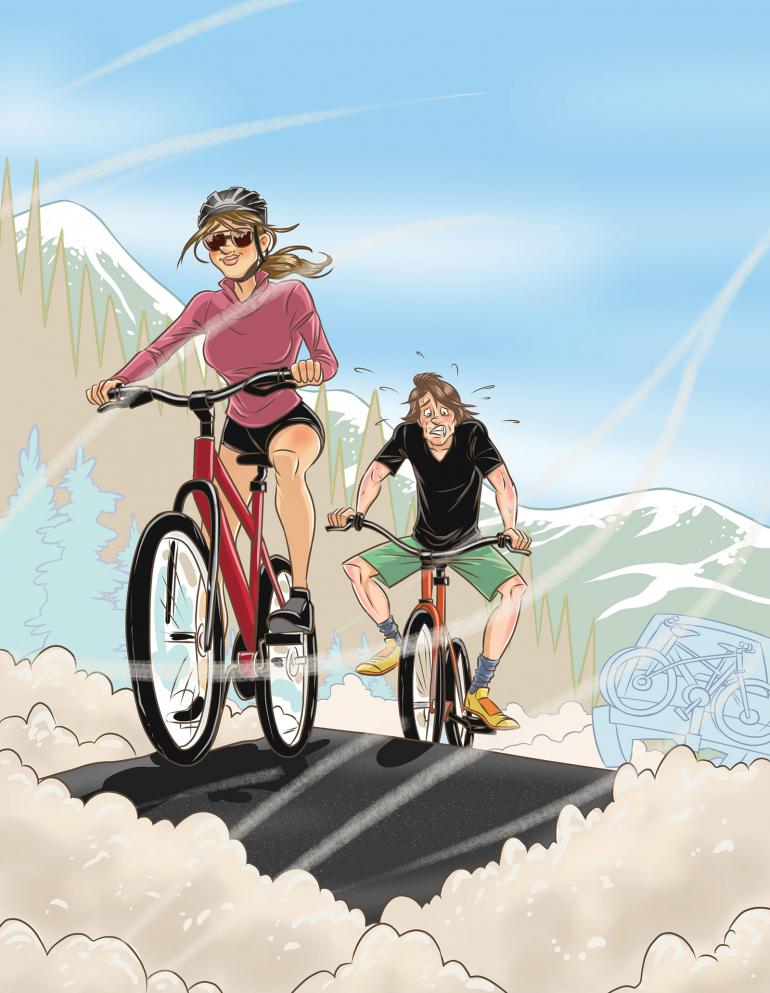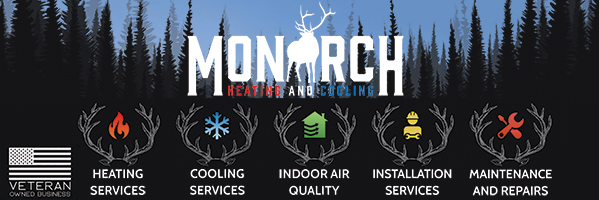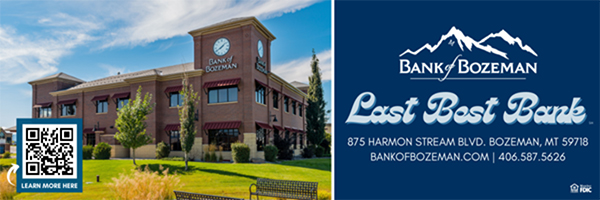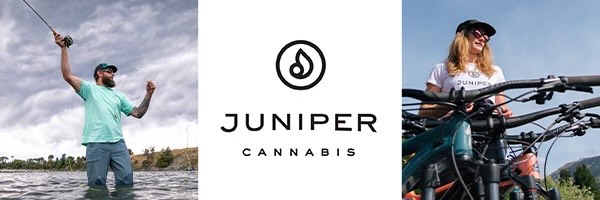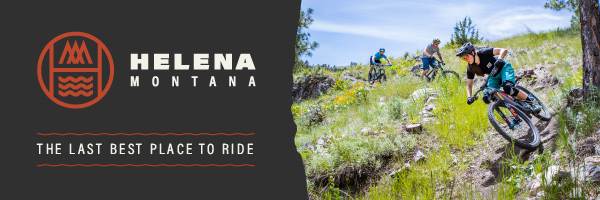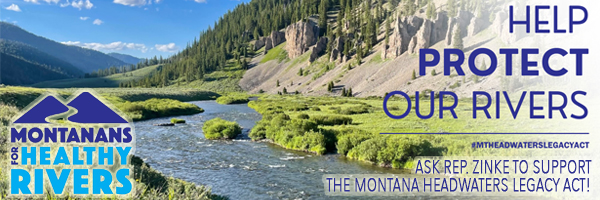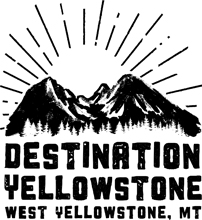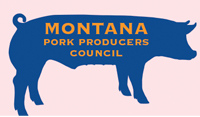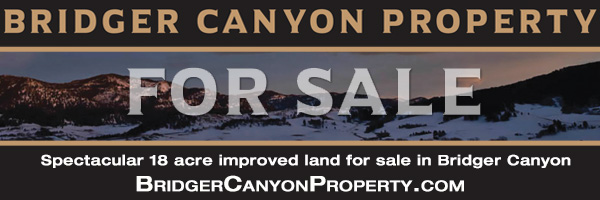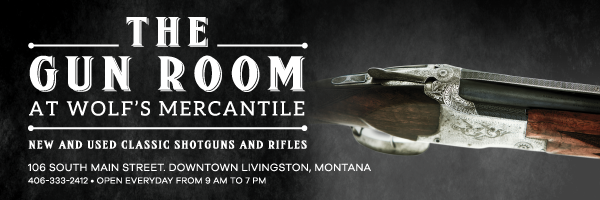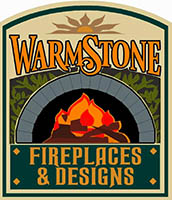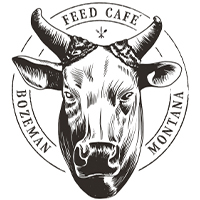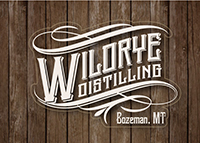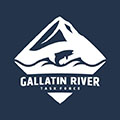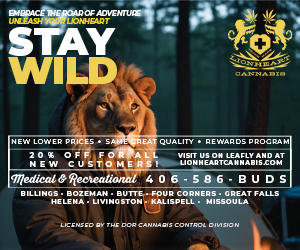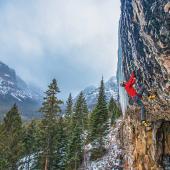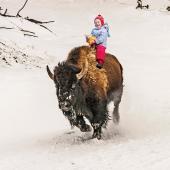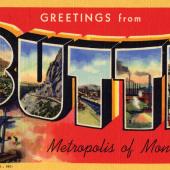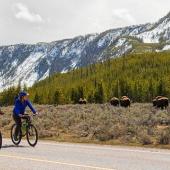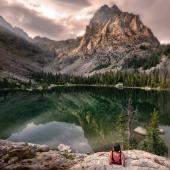Trial by Tire
For an unsuspecting newcomer, a seemingly modest undertaking becomes a Montana rite of passage.
Since the dawn of time, coming-of-age ceremonies have been important cornerstones of cultures worldwide. A boy, most commonly, faces trials and tribulations that he must overcome. Only then, after surmounting many challenges, does he become a man. In some cultures, the challenges are quite extreme. The Australian aborigines, for example, would send their teenage boys into the scorching outback to survive by themselves for up to six months. The North Dakota-dwelling Mandan tribe’s Okipa ceremony was even more extreme: young warriors would give up food, water, and sleep for four days, then were pierced with skewers and suspended by ropes to cause extreme pain. If all went well, the warriors would have a finger chopped off with a hatchet before being tied to two other men and forced to run the perimeter of the village until the skewers tore out of their bodies.
But rites of passage can be much more modest, as I discovered last year.
Our route would travel a total of 38 miles, ascending almost 2,000 feet to the reservoir and dropping the same on the much-quicker ride home.
It was my first spring in Bozeman, and I’d found the ideal activity to kick off the season: biking up to Hyalite with a cool new friend, knocking back a couple brews while lounging in the sunshine, then coasting all the way home. Even though it wasn’t the ultimate adventure, it was what I’d always imagined myself doing after work on a Friday afternoon in my new life. I had big plans for my time under the Big Sky, and this ride would help set them in motion.
The day started with a bike ride downtown to meet Cam—a minivan driving, part-time dirtbag—and we pedaled south with a slight breeze playing with our hair. The ride up Hyalite was her suggestion. Our route would travel a total of 38 miles, ascending almost 2,000 feet to the reservoir and dropping the same on the much-quicker ride home. Small potatoes for a Bozemanite accustomed to steep tours up Blackmore and epic cross-country bike trips in the Beartooths. But for me, a Michigander who spent the winter working at a grocery store, barely skiing, and packing a few extra pounds into his cookie pouch, it was no small undertaking. The highest point in the entire state of Michigan is 1,979 feet, and I had yet to harden my body to Montana’s rugged landscape.
With everything melting, promising a long summer of endless possibility, this ride felt like a rite of passage in its own strange way. Although a spring ride up a paved road isn’t exactly extreme, it did mark a change from one phase of my life to another: from Michigan to Montana; from flatlands to mountains; from inert to active; and from the familiar to something entirely new.
We guzzled the last sips of water and started uphill.
For the first few miles, cruising along Church and then Sourdough, things went great. Our legs were fresh, and we were glad to finally be outside in t-shirts and shorts, warming our sun-starved bodies. We’d only given ourselves four hours to complete the endeavor, having made plans to ride directly to a friend’s barbecue afterward. Gliding along toward the mountains with a light breeze playing in our hair, success felt like a given. I envisioned us riding into glorious sunshine at the top, glowing with perspiration, big grins on our faces, drinking in the panoramic view of the northern Gallatin Range.
Six miles later, that vision was looking more like a mirage. The playful breeze had kicked up into a stiff headwind, sending dust motes whirling with every passing car on 19th. By the time we pulled into the lower Hyalite parking lot, where everyone else was casually unloading bikes from their car, I was whupped. I watched with envy as these cyclists merely began their journey. My quads were burning, my throat was parched (we had only packed two beers and a small water bottle), and my borrowed bike was too small for my tall frame, making it impossible to fully extend my legs.
In the grand scheme of things, the pain I felt from the hard, skinny bike seat under my bony butt was pretty bearable. Nothing like those Mandans enduring excruciating pain, running with skewers attached to bison skulls, or the aborigines wandering the desert searching for water and food. My two-wheeled excursion had nothing on a proper rite of passage, but still, the prospect of completion wasn’t looking too good.
In the parking lot, Cam and I put our heads together. If we made it to the reservoir, we would still have a marathon getting back to Main St., and at our current pace, there was no way we could do it before nightfall. Instead of calling it quits, though, Cam and I picked up our phones and dialed every truck-owning friend we knew. Someone’s gotta be willing to pick us up at the gate. Eventually a roommate agreed, so we decided to see how far we could make it up the canyon, while still getting back to the parking lot at the rendezvous time. We guzzled the last sips of water and started uphill.
The beers were crisp and delicious, tickling our parched tongues, and as I sat there with my feet dangling over the water, I thought that it had still been a pretty good trip.
When we reached Langohr Campground four miles later, everything hurt. My hamstrings, quads, buttocks, and somehow shoulders were all screaming, and my mouth was drier than Montana in August. Cam—who routinely scales ice fields and dates semi-professional climbers—was still in good spirits, but I’d had enough. We wheeled our bikes down the pull-off to the campground, parked them against a pine tree, then retrieved our precious beers from my backpack before I collapsed onto the little bridge strung over Hyalite Creek. The beers were crisp and delicious, tickling our parched tongues, and as I sat there with my feet dangling over the water, I thought that it had still been a pretty good trip. We would only end up biking 16 miles of our planned 38, but I had tested myself against the landscape—and been thoroughly beat by it. That seemed good enough.
We were giddy on the descent. The beer’s effervescence bubbling up in my stomach made my head a little light, though it could also have been dehydration and fatigue. I stopped pedaling and felt the rush of spring air flowing fast over my body. My bike didn’t feel too small anymore. I stood up on the pedals and let it carry me down, down, down to the sounds of melting ice and snow trickling off the canyon walls.
Rites of passage carry us from one stage to another, and after riding Hyalite, I could feel things changing. New calluses were forming, my lungs were learning to love the thin mountain air, and I was slowly learning the names of each ridge, mountain range, and river around Bozeman.
Formal rites of passage are almost nonexistent today, especially in the United States. But there are other rituals that perform a similar function, especially among outdoor communities. The hunter who goes on his first elk hunt, enduring whiteouts, bitter-cold nights, pus-filled blisters, and frozen fingers to fell a 500-pound antlered beast and pack it out on his back; the whitewater kayaker who paddles the Mad Mile during spring runoff for the first time and spends half the run upside-down, his lungs loaded with water by the time he reaches the take-out; the climber who leads her first trad route on Gallatin Tower, trembling the whole way as she puts her life into her partner’s hands for 300 vertical feet—all these people are taking part in their own rites of passage. Their experiences are initiations into other worlds, proving the doers’ ability, bravery, and perseverance, and cementing them into a new group—be it fellow daredevils, wilderness explorers, or just general adventurists.
Rites of passage carry us from one stage to another, and after riding Hyalite, I could feel things changing. New calluses were forming, my lungs were learning to love the thin mountain air, and I was slowly learning the names of each ridge, mountain range, and river around Bozeman. One misadventure at a time, I was making this place home.
A month later we would attempt the ride again, this time driving to the canyon mouth instead of biking there. This time we would make the reservoir easily (I rode my own bike after patching a leaky tube), and at the top we would unwrap club sandwiches before pressing on to see how far the road would take us.
But that ride wasn’t as meaningful. That first abortive attempt was an act of saying “yes” to Bozeman, pitching myself fully into unfamiliar territory, and initiating my own Montana rite of passage. So what if it spit me back out?

